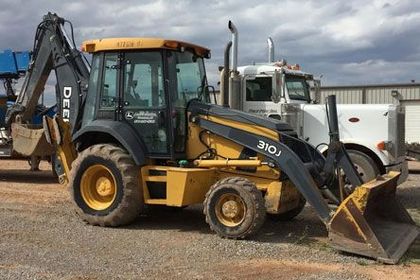All Regarding Oil Field Equipment and Pipeline Equipment: Key Insights and Essential Information
Oil field equipment and pipeline systems play a critical role in the oil and gas sector. They are necessary for the efficient removal and transportation of hydrocarbons. Key parts, such as drilling rigs and storage containers, straight effect functional success. Innovations in modern technology guarantee to improve safety and security and performance. Understanding these aspects is essential for anyone included in or thinking about this intricate industry, as it establishes the stage for deeper exploration of market techniques.

Review of Oil Field Equipment
As the demand for oil continues to expand, understanding the tools used in oil areas ends up being significantly essential. Oil field equipment incorporates a variety of machinery and devices crucial for expedition, removal, and processing. Key parts consist of drilling rigs, which are critical for reaching oil reservoirs, and production devices, such as separators and pumps, that help with the extraction process. Superior Oilfield pipeline equipment rentals. Additionally, tank play a considerable role in holding crude oil prior to transportation. Safety tools, including blowout preventers and stress assesses, guarantees operational safety and security and effectiveness. Each piece of equipment features cohesively to optimize production and keep efficient operations. Experience with this tools is essential for experts in the sector to ensure effective operations and adherence to safety and security requirements
Sorts Of Drilling Rigs and Their Applications
Drilling rigs work as the foundation of oil extraction procedures, with numerous kinds designed for particular geological problems and functional needs. The most common kinds include rotary exploration rigs, which use a turning drill little bit to pass through the planet, and wire tool rigs, understood for their percussion boring technique. For overseas procedures, jack-up rigs and semi-submersible rigs offer stability and assistance in aquatic settings. In addition, directional exploration rigs make it possible for drivers to pierce at angles, getting to down payments that are not vertically obtainable. Each rig type has distinct advantages, optimizing performance and safety based upon the exploration setting. Selecting the appropriate rig is vital for maximizing source extraction while lessening environmental impact and functional prices.

Essential Pipeline Equipment and Their Features
Pipeline facilities is important for the transport of oil and gas from extraction websites to processing facilities and end-users. Different vital equipment parts facilitate this process. Pipelines themselves work as the key channels, designed to hold up against high pressure and harsh compounds. Pump stations are important for preserving flow by increasing stress along the pipeline. Valves play an important function in regulating circulation and isolating areas for maintenance. In addition, installations and ports guarantee safe and secure joints between pipeline sections. Checking systems, including circulation meters and pressure sensing units, are vital for identifying leakages and optimizing flow prices. useful link Finally, pigging devices is employed for maintenance and cleansing, safeguarding pipeline stability and efficiency. Together, these elements develop the foundation of a trustworthy pipeline system.
Innovations and Technologies in Oil and Gas Equipment

Safety And Security and Maintenance Practices in the Oil Sector
While the oil industry has made substantial strides in innovation and efficiency, the significance of durable safety and security and maintenance methods can not be overstated. Effective safety procedures are important to safeguard workers and the environment, reducing the risk of accidents and spills. Routine examinations and maintenance of equipment help recognize potential issues before they escalate, making sure functional honesty. Training programs for employees are essential, emphasizing the value of security recognition and emergency situation response procedures. Furthermore, adherence to market guidelines and requirements fosters a culture of security. Carrying out sophisticated tracking modern technologies can further enhance maintenance practices, permitting real-time assessments of devices conditions. Eventually, prioritizing safety and maintenance is essential to the over at this website sustainability and success of the oil industry.
Frequently Asked Questions
What Are the Ecological Impacts of Oil Field Equipment?
The environmental effects of oil field equipment consist of habitat devastation, water contamination, and air pollution (Superior Oilfield pipeline equipment rentals). In addition, tools malfunction can bring about spills, negatively affecting remote control excavators wild animals and ecological communities, highlighting the requirement for rigorous guidelines and monitoring
Exactly How Is Oil Field Equipment Delivered to Remote Locations?
Carrying oil field equipment to remote areas typically entails specific cars, helicopters, or barges. Logistics firms coordinate routes, making certain equipment shows up safely and successfully, considering surface and accessibility to reduce delays and maximize efficiency.
What Governing Criteria Govern Oil Field Equipment?
Regulative criteria controling oil field equipment mostly include security, environmental defense, and operational efficiency guidelines. Agencies such as OSHA and EPA apply these regulations to ensure safe practices and reduce eco-friendly influence in oil extraction operations.
What Skills Are Required to Operate Oil Area Equipment?

How Do Oil Costs Influence Equipment Demand and Use?
Oil prices significantly affect devices need and usage. Higher rates usually bring about enhanced exploration and production tasks, driving demand for machinery. Alternatively, lower costs may lead to lowered procedures and lowered requirement for equipment.